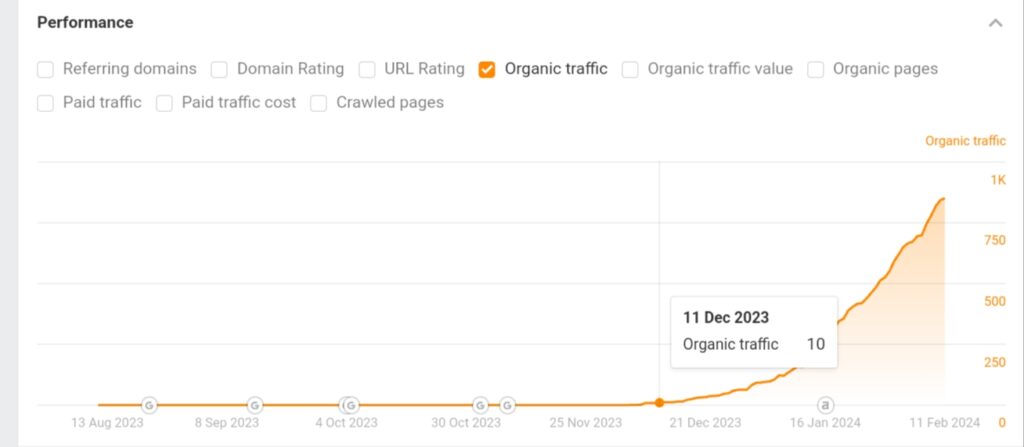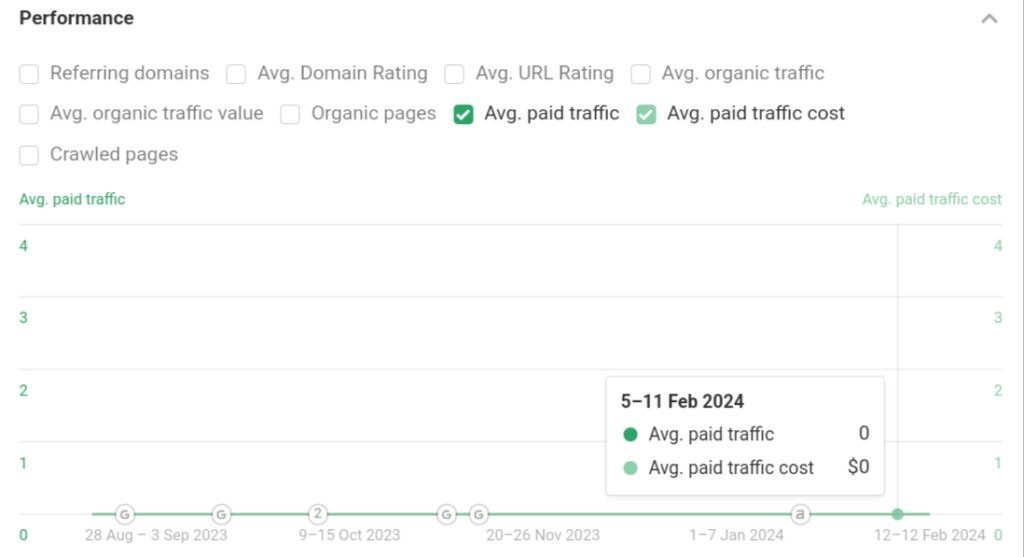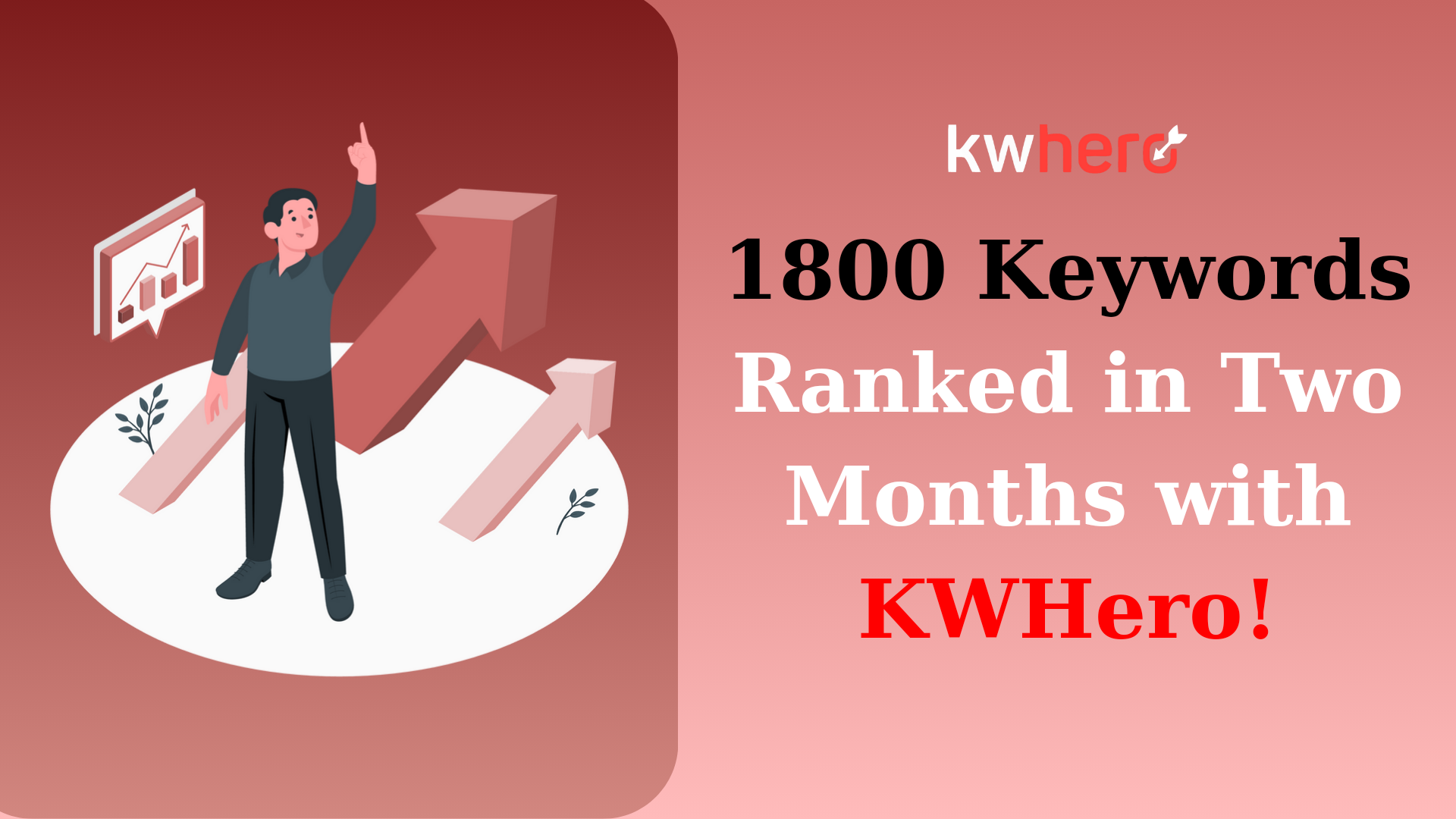Two words — Google Sandbox.
This purgatory of sorts is where all new websites are rumored to go before Google makes the final decision to rank them and in what position to do so.
Much like purgatory, people have debated whether or not the sandbox actually exists. Regardless of which side of the divide you stand, it’s not difficult to admit that newer websites have a much harder time getting ranked by Google, no matter their content quality.
But, from all indications observed in our latest case study, there are a few exceptions and, if you do things just right like they did, you can end up with 1,800 keywords ranking organically and go from 0 to over 850 visitors in two months.
Quick Update
This article was published on Feb 11th, 2024. At the time, the site had ranked for up to 1800 organic keywords in less than two months. Between then and Feb 16th, 2024 – less than a week later – the site has gone on to rank 200 more keywords, bringing the total number of ranking organic keywords to 2,000 with KWHero.

About the Site
Our subject is a niche site that started as a passion project in early December, 2023 — so, less than three months ago. We’ll call them Site X, as we cannot reveal their real name or URL. Plus, between us, it sounds pretty cool.
Owing to its new status on the market, it has a domain rating of 0.5 and a grand total of 9 backlinks. Referring domains and URL authority aren’t that high up either, with scores of 9 and 5 respectively.

In more ways than one, this site is fresh off the boat.
Site X’s Challenge — New Sites Must Wait Their Turn
It’s not so much of a challenge as it is a standard expectation.
As a general rule of thumb, new sites don’t often rank highly or repeatedly on Google. This is unless they do something out of the ordinary, like spend a ton of money pursuing backlinks. Otherwise, the Google Sandbox theory holds the view that Google just doesn’t trust new sites not to be a load of spammy, get-ranked-and-rich-off-ad-revenue-quick schemes.
Having only been launched about two months ago as at the time of writing this, Site X was in a similar situation.
And, being in that situation, it was evident and expected that they wouldn’t be seeing a lot of traffic nor would they be getting any substantial revenue worth writing about from their nice little passion project, not for a few months at least.
Alongside this, even if they wanted to power through the content efforts needed to build authority and ranking fast, they didn’t quite have the inhouse personnel to handle it. It’s hard to build out a topic cluster and begin ranking in record time when you’re managing six other sites.
Five Steps in the Right Direction
Here’s a breakdown of their five-point strategy.
- Most importantly, instead of trying to pull all the content stunts alone, they handed the reins over to KWHero. Full disclosure – they had a content agency take care of prompting and editing. But, the agency used KWHero to do the job.
- This inevitably meant that they could produce much more content than if they were using regular inhouse teams. So, the team had 70 content pieces published in two months.
- 50 of those articles were targeting one sub-niche within the larger niche of the website, giving the opportunity to build topical authority, an element of a coherent content strategy.
- Just before every piece of content went live, a niche expert went through it. KWHero does a great job of producing good content but an expert’s opinion is always a solid addition.
- Finally, the site explored other traffic sources, giving Facebook the chance to influence their growth.
Results Came In — All A’s!
Firstly, the site currently ranks for over 1,800 keywords, with a monthly organic traffic of 852 and climbing.

For context, just two about months ago, they had less than 20 visitors.

Plus, in case you missed it, note that absolutely nothing is coming in from paid search. This is all organic.

Apart from the visitor count, of the hundreds of keywords the site is currently ranking for, nearly forty of them are on the front page between the fourth and tenth positions. Another two hundred are sitting in the second page, just waiting to be bumped up to the first.

Finally the site’s organic traffic value after just two months of consistently writing and publishing with KWHero is pegged at about $400.

Not bad at all for a new kid on the block.
Key Takeaways
If all these graphs have inspired you, there’s a few major things we’d advise you to do.
First, ramp up your content production but don’t simply shoot blanks. Be sure that there’s a ton of value in what you’re producing. If you can afford to do it all inhouse, go for it. Otherwise, you can adopt Site X’s model. That is, use KWHero to plan and write. Then, seal the deal with an inhouse expert for proofreading and reviewing.
Secondly, work with a coherent content strategy. Do not simply put out whatever comes to mind. Instead, try to build topical authority bit by bit.
Finally, execute like there’s no other option and distribute your content across all channels that seem viable to you, depending on your peculiar business needs.
The point of this whole discourse, especially when we showed you the site stats at the beginning, was to show that good results are achievable with KWHero, even if your URL doesn’t have “Forbes” or “New York Times” in it.
Godspeed!
